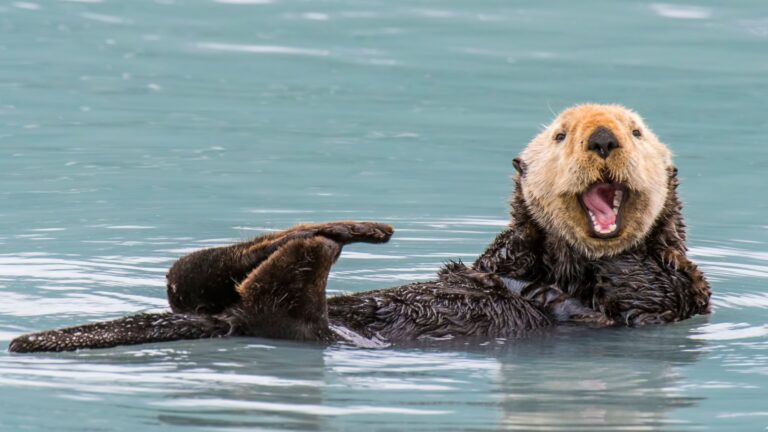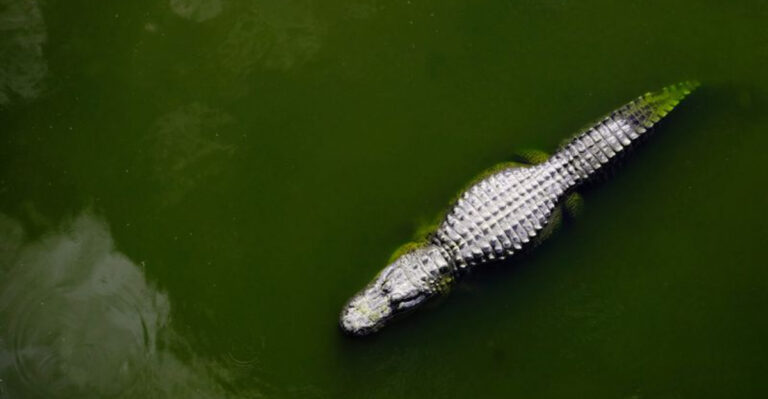Scientists Uncover Fossil Of One Of The Biggest Dinosaurs To Ever Roam The Earth
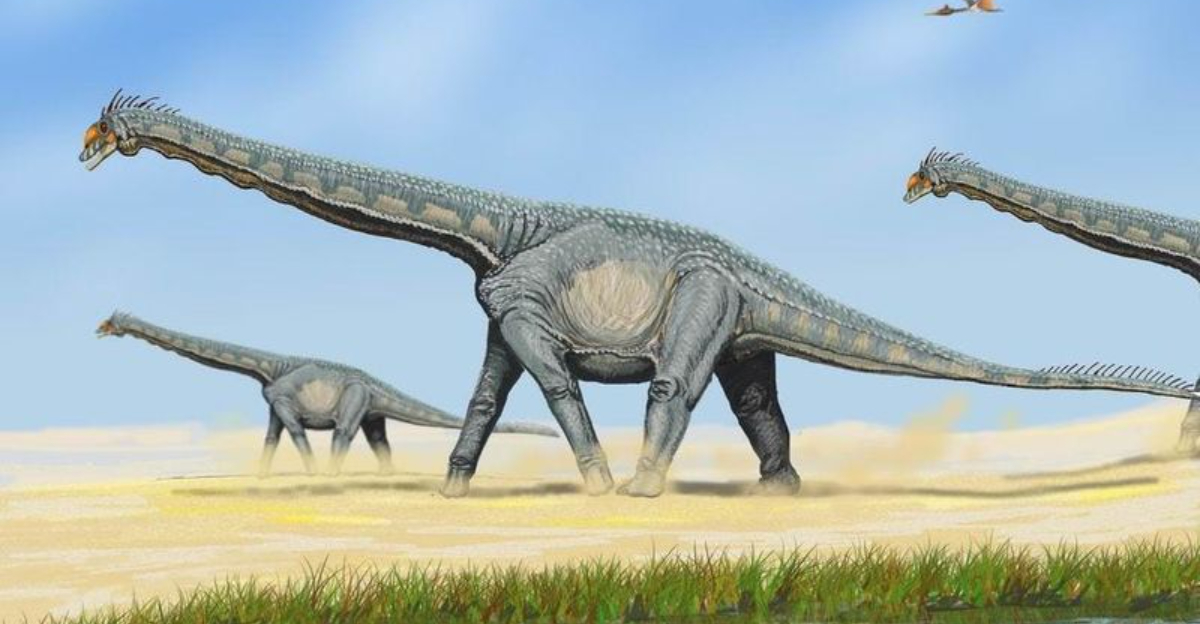
Paleontologists have made an incredible discovery that’s shaking up our understanding of prehistoric giants.
A team of scientists recently unearthed the fossil remains of an Alamosaurus, one of the largest dinosaurs to ever walk the Earth.
This massive plant-eater lived during the Late Cretaceous period and has left behind clues that are helping us piece together the story of these ancient behemoths.
The Mighty Alamosaurus: A Giant Dinosaur Unearthed

Standing taller than a five-story building, the newly discovered Alamosaurus specimen has paleontologists buzzing with excitement. This titanosaur – a group of long-necked sauropods – stretched nearly 100 feet from head to tail and likely weighed as much as 10 adult elephants combined.
The fossil includes several vertebrae, portions of the pelvis, and limb bones that reveal its massive scale. What makes this find particularly special is the completeness of certain skeletal sections.
Preliminary analysis suggests this individual might have been one of the largest of its kind, possibly even rivaling the famous Argentinosaurus in sheer size.
Where The Alamosaurus Fossil Was Discovered

The remarkable Alamosaurus remains were uncovered in the rugged terrain of Big Bend National Park in Texas. This remote wilderness area along the Rio Grande has yielded numerous dinosaur fossils over the decades, but none quite as spectacular as this recent find.
A team led by Dr. Miranda Cortez spotted an unusual bone fragment protruding from a weathered sandstone ridge during a routine survey. After months of careful excavation, they realized they had stumbled upon something extraordinary.
The fossil bed, dating back approximately 69 million years, preserved the dinosaur in what was once an ancient floodplain environment.
What Makes Alamosaurus One Of The Largest Dinosaurs

The sheer dimensions of the Alamosaurus bones tell a story of almost unimaginable size. Each vertebra measures nearly three feet across – larger than a car tire! The femur (thigh bone) alone stands taller than an adult human.
Scientists estimate this titanosaur reached heights of over 60 feet and stretched longer than a basketball court. For comparison, that’s about 20 feet taller than the famous Tyrannosaurus rex.
Weight calculations suggest this giant tipped the scales at 70–80 tons. Imagine a creature so massive that each footstep would have caused the ground to shake, yet somehow its massive frame was supported by a surprisingly lightweight, honeycomb-structured skeleton.
How Scientists Identified The Alamosaurus Fossil

Identifying this giant involved detective work worthy of a CSI episode. The team first noticed distinctive honeycomb-like air spaces in the vertebrae – a hallmark of titanosaur sauropods. They compared these features with known Alamosaurus specimens housed in museums across the country.
DNA analysis wasn’t possible due to the fossil’s age, but microscopic examination of bone tissue revealed growth patterns unique to Alamosaurus. The team used 3D scanning technology to create virtual models of each bone, allowing for precise measurements and comparisons.
The clincher came when they identified a peculiar ridge formation on the hip bones that matches only one dinosaur in the fossil record: Alamosaurus sanjuanensis.
Big Bend National Park: A Hotspot For Dinosaur Discoveries
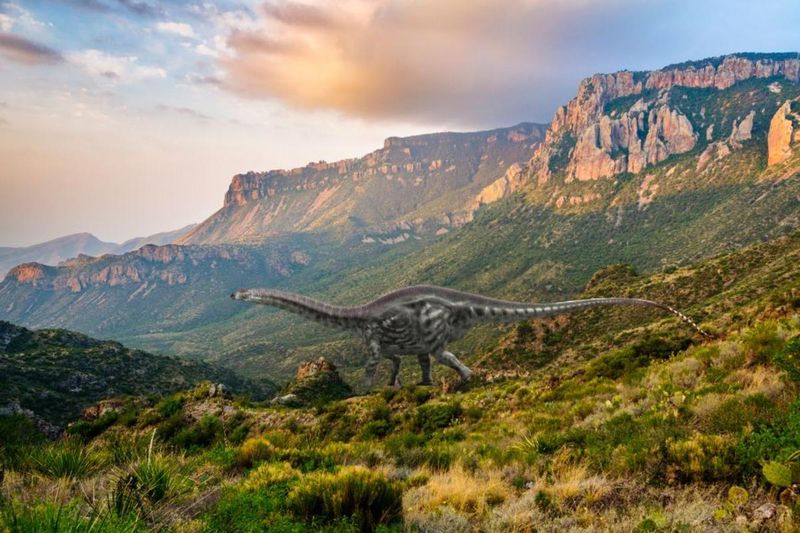
Big Bend’s treasure trove of fossils makes it a paleontologist’s paradise. The park’s unique geology has preserved a remarkable record of the Late Cretaceous period, with layers of sedimentary rock acting like pages in Earth’s history book.
Over 90 dinosaur species have been documented within the park boundaries. Before this Alamosaurus, the most famous resident was Quetzalcoatlus, a massive flying reptile with a wingspan wider than a small airplane.
The park’s harsh desert environment actually helps with fossil hunting – minimal vegetation and natural erosion gradually expose bones that have been hidden for millions of years. Rangers regularly patrol known fossil beds, protecting these scientific treasures from weather damage and potential looters.
Alamosaurus: A Plant-Eating Colossus Of The Late Cretaceous
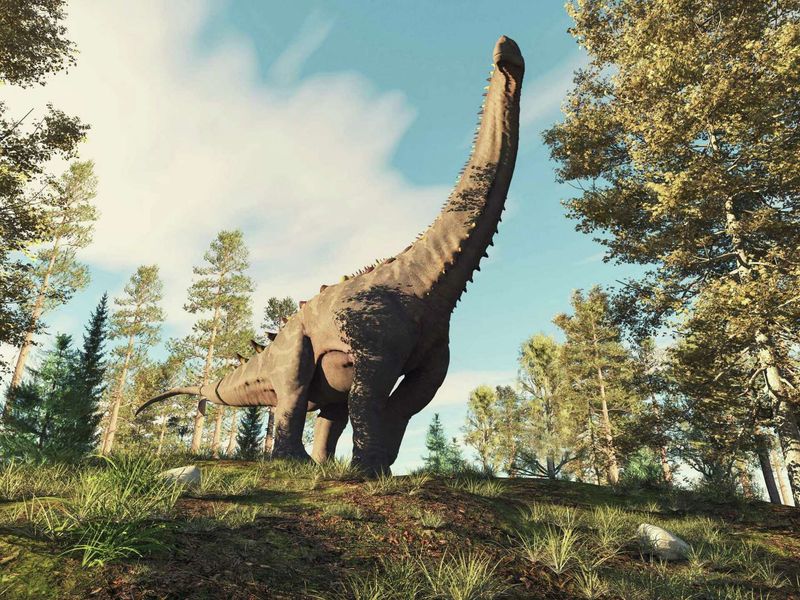
Despite its intimidating size, Alamosaurus was a gentle giant that munched exclusively on plants. Its pencil-shaped teeth were perfect for stripping leaves from branches but useless for chewing – this dinosaur swallowed its food whole and digested it in its massive gut.
The creature’s incredibly long neck allowed it to reach vegetation high in ancient trees or sweep across wide areas of ground cover without moving its enormous body. Scientists believe it needed to consume hundreds of pounds of plants daily just to sustain itself.
Fossilized plant material found near the specimen suggests a diet heavy in conifers, ferns, and early flowering plants that dominated the landscape approximately 69 million years ago.
New Insights Into Alamosaurus’ Size And Habits
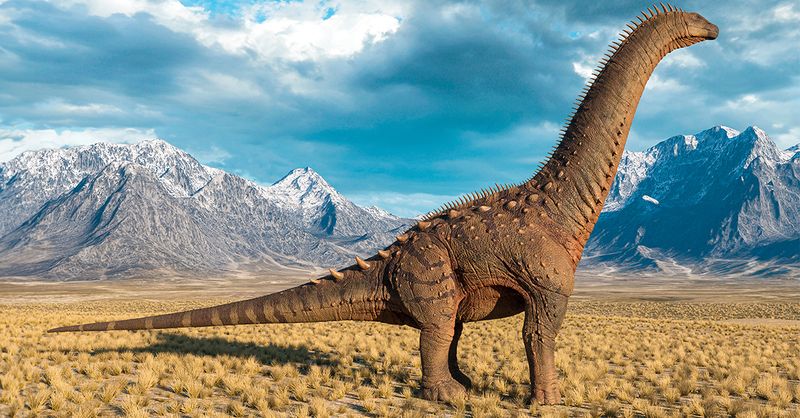
Fresh analysis of the fossil has overturned some long-held beliefs about Alamosaurus. The creature appears to have been even larger than previously thought, potentially making it the biggest dinosaur from North America ever discovered.
Bone growth rings suggest this individual was still growing when it died! Most surprising was evidence of herd behavior found at the site – multiple footprints of different-sized Alamosaurus preserved in nearby rock layers indicate these giants traveled together, possibly for protection.
The discovery of partially digested plant material preserved within the ribcage area has given scientists their first direct look at what these creatures actually ate. Small, polished stones found with the remains confirm that like modern birds, Alamosaurus used gastroliths – stomach stones – to help grind tough plant material.
The Fossil Discovery That’s Changing What We Know About Dinosaurs
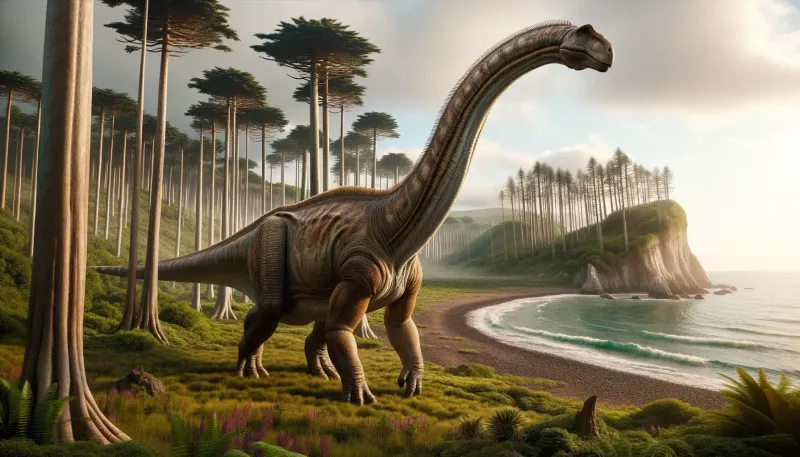
Game-changing evidence within this fossil is rewriting dinosaur history books. The specimen’s location in Texas contradicts previous theories about titanosaur migration and suggests these giants had a much wider range than we thought.
Microscopic analysis of the bones reveals surprising adaptations to cooler climates – challenging the notion that massive dinosaurs could only thrive in tropical environments. The fossil also shows healed injuries, indicating this Alamosaurus survived attacks from predators.
Most revolutionary is the discovery of preserved skin impressions showing a pattern of scales unlike any previously documented. This rare find gives us our first glimpse of what Alamosaurus actually looked like on the outside – not just its skeleton – and hints at possible coloration patterns used for communication or camouflage.
Why Alamosaurus Was So Big And How It Survived
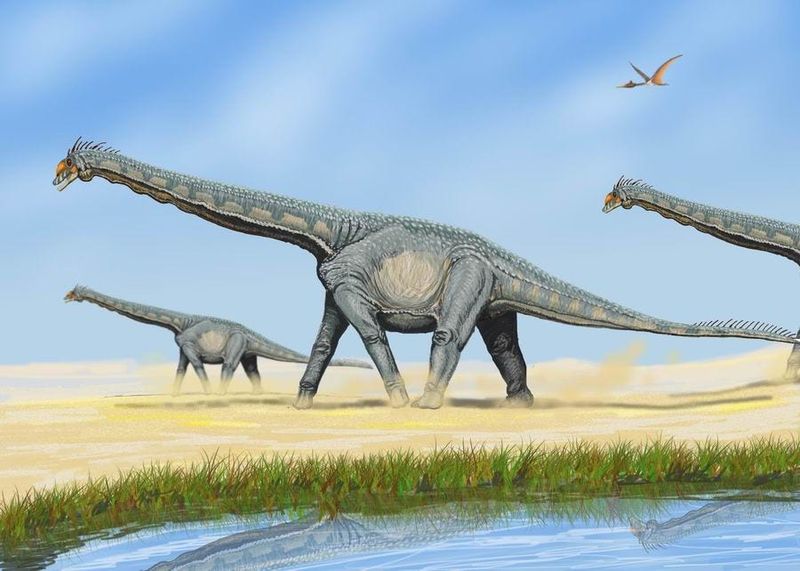
Alamosaurus likely evolved its colossal size as nature’s ultimate defense mechanism. Few predators would dare attack a healthy adult – even the fearsome Tyrannosaurus rex would think twice before tangling with this behemoth.
Its massive gut functioned like a fermentation vat, breaking down tough plant material that other animals couldn’t digest. This gave Alamosaurus access to food sources with little competition.
The dinosaur’s unique respiratory system – similar to modern birds – featured air sacs that lightened its skeleton while providing highly efficient oxygen exchange. Blood vessel patterns in the fossil suggest a specialized circulatory system that could pump blood up that incredible neck to the brain. These adaptations allowed Alamosaurus to thrive despite its seemingly impossible proportions.
The Importance Of This Fossil For Paleontology
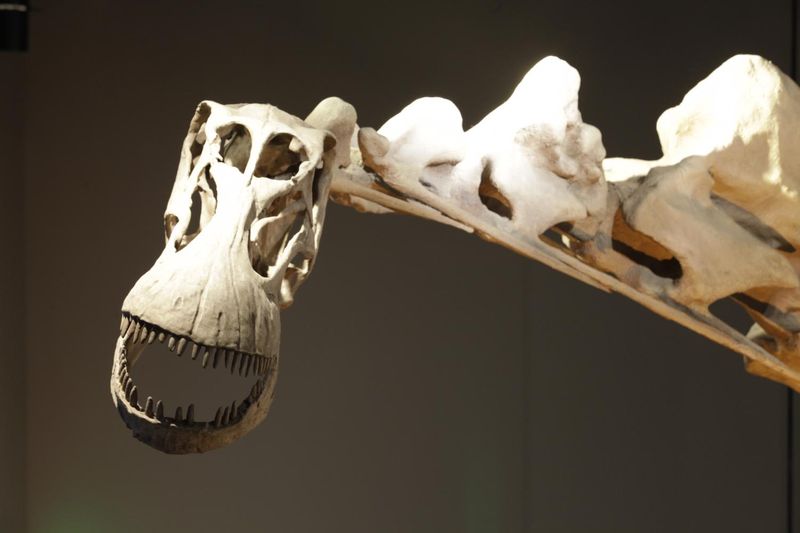
This Alamosaurus specimen represents a watershed moment for dinosaur science. Its exceptional preservation – including rarely fossilized soft tissue impressions – offers unprecedented insights into titanosaur anatomy, filling crucial gaps in our understanding.
The discovery challenges the long-held belief that the largest dinosaurs lived only in South America. Finding such a massive specimen in North America forces scientists to reconsider continental connections and migration patterns during the Late Cretaceous.
Beyond size records, this fossil provides valuable data about the ecosystem just before the mass extinction that wiped out non-avian dinosaurs. The specimen has already attracted international collaboration, with researchers from twelve countries contributing to its study – making it one of the most thoroughly examined dinosaur fossils in history.
What’s Next For Alamosaurus Research And Discovery

The future of Alamosaurus research looks incredibly promising. Scientists are preparing to return to the discovery site, believing more of the skeleton may still be buried in the surrounding rock. Ground-penetrating radar surveys have already identified several promising targets.
Advanced techniques like isotope analysis will soon reveal details about the dinosaur’s diet, growth rate, and even the climate it lived in. Museum conservators are creating a specialized support structure to display the fossil while allowing continued scientific access.
Perhaps most exciting is the application of machine learning to analyze thousands of Alamosaurus bone photos, potentially identifying subtle features human researchers might miss. Virtual reality models are being developed to let people worldwide experience the scale of this prehistoric giant without traveling to a museum.




